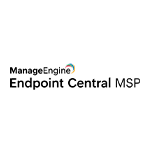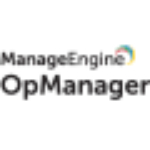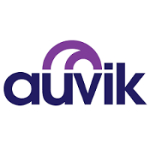List of Best MSP Software
Showing 10 of 27 products
ManageEngine Endpoint Central MSP
Streamline MSP operations and boost efficiency with our all-in-one RMM software. Automate processes like patching, asset management, and more to scale your business effectively.
ManageEngine Endpoint Central MSP is a next-gen Remote Monitoring and Management (RMM) software designed for Managed Service Providers (MSPs) to efficiently manage client endpoints from a centralized console. It addresses the evolving needs of the IT...Read ManageEngine Endpoint Central MSP Reviews

ManageEngine OpManager MSP
All-in-one IT Operations Management
ManageEngine OpManager MSP is a multi-client powerful network monitoring and management tool designed for service providers to proactively oversee and manage their clients networks from a remote location...Read ManageEngine OpManager MSP Reviews
Atera is a software designed for modern businesses. With its intuitive interface and powerful features, Atera simplifies IT management and boosts productivity. Its innovative technology streamlines tasks, improves response time, and reduces downtime...Read Atera Reviews
RemotePC is a versatile remote access software that allows you to securely access and control your computer from anywhere, at any time. With its user-friendly interface features, RemotePC aims to enhance your remote working experience and make it mor...Read RemotePC Reviews
Auvik is a network management tool designed to simplify and streamline the complexities of IT infrastructure management. With its intuitive interface features, Auvik helps businesses effectively monitor, troubleshoot, and secure their networks for ma...Read Auvik Reviews
Kaseya VSA is a solution for managing and automating IT systems. With a suite of features designed to increase efficiency, streamline operations, and enhance security, Kaseya VSA is the go-to choice for businesses of all sizes. Keep your systems runn...Read Kaseya VSA Reviews
SolarWinds Threat Monitor, the all-in-one solution for monitoring and managing network security. With its advanced features and user-friendly interface, Threat Monitor offers businesses of all sizes a powerful tool to easily identify and respond to p...Read SolarWinds Threat Monitor Reviews
NinjaOne the ultimate software solution for streamlining your daily tasks and boosting productivity. With its user-friendly interface features, NinjaOne simplifies your workflow and empowers you to achieve more in less time. Say goodbye to cluttered...Read NinjaOne Reviews
Zoho Assist is a reliable cloud-based remote desktop solution with comprehensive secure remote access features. Enhance your customer support experience and explore the one-stop solution for all your remote support needs with our efficient remote acc...Read Zoho Assist Reviews
Spiceworks is a brilliant and innovative software designed to make IT management easier and more efficient for businesses of all sizes. With a user-friendly interface and powerful features, Spiceworks streamlines daily tasks and assists in keeping te...Read Spiceworks Reviews
- What Is MSP Software?
- Top Reasons Why Businesses Need MSP Software?
- What Are the Top Key Features of MSP Software?
- What Are the Top Benefits of MSP Software?
- What Are the Steps to Choose the Right MSP Software?
- What Are the Types of MSP Software for Different Industries?
- What Are the Technology Trends for Best MSP Software?
- What Are the Deployment Options for MSP Software?
What Is MSP Software?
MSP software, which stands for managed service provider software, is mostly utilized by IT organizations. It is a sort of software that assists IT organizations in managing the systems and networks of their customers. It enables the IT company to deliver managed services to customers, allowing them to focus on their business and operations rather than the complexities of managing their IT infrastructure.
Customers can also save time and money by automating operations such as patching, security monitoring, backup and recovery, and asset management. The MSP software delivers extensive insights into the customer's IT environment, allowing the IT company to better understand the customer's demands and provide more accurate and cost-effective solutions. The best MSP tools used for assisting IT organizations in providing better-managed services to their clients.
Top Reasons Why Businesses Need MSP Software?
1. One effective strategy to minimize system downtime is to ensure that both software and hardware components are regularly updated.
2. The managed service provider software is capable of automating updates, patches, and security protocols.
3. The MSP management software is monitored in a proactive manner to detect and address any potential faults.
4. Facilitates the implementation of remote monitoring and support functionalities.
5. The individual oversees the administration of end-user accounts, including the management of permissions, privileges, and system access.
6. One way to improve data security is by implementing encryption techniques to protect sensitive information. Additionally, establishing password complexity requirements can further enhance the security measures in place.
7. Enhances the operational efficiency of both the software and hardware components.
8. The best managed service provider software automates several user support operations, including asset tracking and inventory maintenance.
9. The MSP management software seamlessly incorporates with Active Directory to facilitate user provisioning and authentication processes.
10. This technology streamlines the process of IT management.
11. The implementation of streamlines in the help desk system facilitates enhanced customer care provision.
12. Reduces operational and administrative expenses.
13. The best managed services software facilitates the storing and transfer of data from a remote location.
14. One of the benefits of this technology is that it improves the visibility of data and enhances the security of the system.
15. The best managed service provider software produces network diagnostic and performance reports.
What Are the Top Key Features of MSP Software?
The top key features of MSP software are:
1. Proactive Maintenance: The implementation of automated background checks serves the purpose of proactively identifying potential issues in order to prevent service disruptions.
2. Automated Data Backups: The implementation of regularly scheduled or on-demand data backups to both safe and easily accessible places is crucial in mitigating the risk of data loss during system outages.
3. Issue and Change Tracking: The proposed method aims to effectively document, evaluate, and rank various issues in order to expedite their resolution.
4. Asset and Software Inventory Tracking: The implementation of a comprehensive inventory management system is crucial for the purpose of maintaining accurate records of both hardware and software components.
5. Resource Tracking: The real-time monitoring and measurement of system resources to ensure the fulfillment of all requirements.
6. Cloud Services Integration: The best MSP tools facilitate the seamless integration of cloud services, such as Amazon S3 or Microsoft Azure.
7. Security and Compliance: Automated security scans are employed to detect and rectify potential security flaws.
8. Automated Monitoring and Diagnostics: The use of real-time performance and health monitoring systems facilitates the identification of irregularities and malfunctions, enabling prompt and appropriate actions to be taken in response.
What Are the Top Benefits of MSP Software?
The top benefits of MSP software are:
1. Improved Efficiency: MSP management software enables firms to automate recurring processes and strategically arrange them for enhanced operational efficiency, hence optimizing workflow and resource allocation.
2. Cost-Efficiency: MSP management tools have the potential to generate cost savings for enterprises through the reduction of overhead expenses and the optimization of current resources.
3. Improved Customer Relationships: By utilizing MSP management software, firms are able to monitor and record client interactions, thereby enhancing the quality of customer care and improving the efficiency of troubleshooting customer concerns.
4. Better Understanding of Assets: MSP software facilitates the analysis of asset use and the identification of areas for enhancement inside businesses.
5. Reduced Risk of Security Breaches: The best managed service provider software offers extensive monitoring and alerting functionalities, enabling enterprises to promptly detect potential security issues and unauthorized access.
6. Increased Mobility: MSP software facilitates the remote access and management of assets, hence enhancing productivity and promoting collaboration inside enterprises.
7. Increased Data Security: By utilizing the best MSP management software, firms may effectively safeguard sensitive data and prevent unwanted access to secret information, hence ensuring robust security measures.
8. Cloud-Enablement: MSP software solutions enable enterprises to effectively manage device setups and facilitate software updates through cloud-based platforms, hence enhancing remote accessibility and scaling capabilities.
What Are the Steps to Choose the Right MSP Software?
1. Evaluate your business needs: Evaluate the requirements of your firm and its associated needs, encompassing financial, temporal, and personnel aspects. This will aid in the identification of the various types of best MSP tools that are now available in the market, with the objective of selecting the most suitable option to fulfill your specific requirements.
2. Research available options: Conduct an examination of the best managed service provider software alternatives currently accessible in the industry and select the one that is customized to meet your individual needs. When evaluating options, it is important to take into account many variables such as the range of features offered, pricing models, client feedback, security measures, adaptability, scalability, and the availability of technical assistance.
3. Compare and Contract features: Conduct a comparative analysis of the features in relation to the predetermined requirements of your firm, thereby refining the range of potential solutions. Evaluate the extent to which the vendor provides assistance in accommodating modifications within your specific environment or technological infrastructure.
4. Be sure of cost considerations: The evaluation of any best msp tools necessitates the consideration of cost as a crucial component. It is advisable to evaluate the service-level agreements, management fees, billing alternatives, and overall pricing structure of the services under consideration.
5. Assess Integration capabilities: Evaluate the best managed services software to ascertain its level of integration with your current systems and procedures, as well as those of potential partners.
6. Test the Solution: Conduct a comprehensive evaluation of the MSP software to ascertain its alignment with both your individual requirements and those of your organization. It is imperative to ascertain whether the vendor possesses the capability to deliver the services that align with your specific requirements, while also meeting the performance standards that you anticipate.
7. Choose: After conducting thorough research and carefully comparing the list of needs with the features provided by the MSP management tools, one can proceed to select the most suitable MSP solution for their firm.
What Are the Types of MSP Software for Different Industries?
The selection of the best MSP software utilized by various sectors is contingent upon the specific requirements of the business and the characteristics inherent to the industry. Various businesses utilize different types of best managed service provider software.
1) Cloud-based MSP Software: Cloud-based managed service provider's MSP management tools offers significant advantages to organizations seeking remote access to specific aspects of their operations and the scalability afforded by cloud technology.
The best managed services software has gained significant popularity across several industries, with particular favorability observed in sectors such as software-as-a-service (SaaS), content management, and e-commerce.
2) Network Monitoring MSP Software: The practice of network monitoring involves the systematic observation and analysis of network activities, with the aim of ensuring the efficient and secure operation of MSP management tools utilized for the purpose of network monitoring and detection of prospective hardware or software complications.
The utilization of this particular Managed Service Providers MSP software is applicable across several industries, with a notable advantage for organizations operating in sectors characterized by a high volume of data, such as financial services, energy, and healthcare.
3) Asset Management MSP Software: Asset management refers to the systematic approach of overseeing and controlling a company's assets in order to optimize its value and achieve the organization's MSP software is a technological instrument employed for the purpose of overseeing and managing the various assets and operations of an organization.
This type of software is commonly employed in the manufacturing, hospitality, and logistics industries, where organizations must assure the appropriate allocation of workers, machinery, and supplies to facilitate the smooth and productive functioning of their operations.
4) Endpoint Security MSP Software: Endpoint Security Managed Service Providers MSP software is used for the purpose of safeguarding networks and devices against malevolent activities and cybersecurity risks. This particular software is vital across several industries, particularly those engaged in the creation of intellectual assets or the management of confidential client data.
5) Network Security MSP Software: The utilization of network security managed service provider software is employed for the purpose of effectively managing network firewalls and safeguarding systems from potential assaults.
The best managed services software is extensively utilized across several industries, proving particularly advantageous for organizations dealing with a substantial influx of electronic transactions, such as those operating within the retail, e-commerce, and financial services sectors.
What Are the Technology Trends for Best MSP Software?
The industry of the best MSP software has undergone significant advancements in recent years, exhibiting a continuous state of evolution.
The following are several prominent technological advancements that are exerting an influence on the most advanced Managed Service Providers MSP software solutions:
1. Artificial Intelligence (AI) and Machine Learning (ML): Artificial intelligence (AI) and machine learning (ML) have the potential to assist managed service providers (MSPs) in automating their operations, enhancing efficiency, and gaining deeper insights into consumer demands. The utilization of AI-driven analytics empowers Managed Service Providers (MSPs) to anticipate consumer behavior, hence enhancing their ability to provide superior and tailored services.
2. Cloud Computing: Cloud computing plays a crucial role for Managed Service Providers (MSPs) by enabling convenient access to applications and data from any location, at any time, irrespective of geographical constraints. Managed Service Providers (MSPs) are utilizing cloud computing technology to optimize their operational processes and deliver services that are more adaptable, while simultaneously reducing their operational costs.
3. Automation: Automation is a prominent and significant development within the best managed services software. Automation plays a pivotal role in assisting Managed Service Providers (MSPs) in the reduction of operating expenses, mitigation of errors, and provision of superior service quality within a compressed timeframe.
4. Data Security and Compliance: Data security and compliance are key components of Managed Service Providers (MSPs). It is imperative to ensure the security of all stored and transferred data in order to safeguard against potential data breaches and other security vulnerabilities. Managed Service Providers (MSPs) are currently using cutting-edge security protocols in order to guarantee the protection and integrity of data.
5. Service Integration: Managed Service Providers (MSPs) are currently including a diverse range of services, including storage, networking, security, and backup, into their comprehensive service packages. This feature facilitates enhanced scalability and simplicity for Managed Service Providers (MSPs) and clients alike.
What Are the Deployment Options for MSP Software?
The available deployment options for the best MSP software exhibit variability contingent upon the particular program in question. Typically, MSP software is implemented in the form of either on-premise or cloud-based solutions.
On-premise solutions encompass the installation of the best managed services software on a physical server, which can be located either on the premises of the organization or hosted remotely. These solutions are typically managed by a Managed Service Provider (MSP).
Cloud-based solutions offer increased flexibility by hosting software on a distant server operated by a third-party entity, allowing access through internet connectivity. Contemporary MSP software commonly provides the choice between on-premise and cloud-based deployment methods.
In this particular scenario, the managed service provider (MSP) has the option to implement the program either on their internal server or alternatively, on an external server provided by a third-party.








